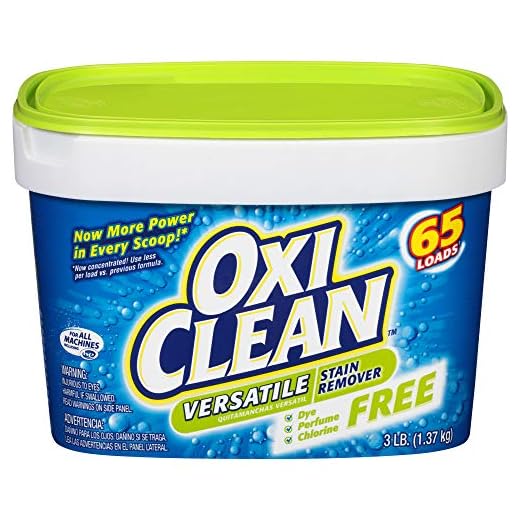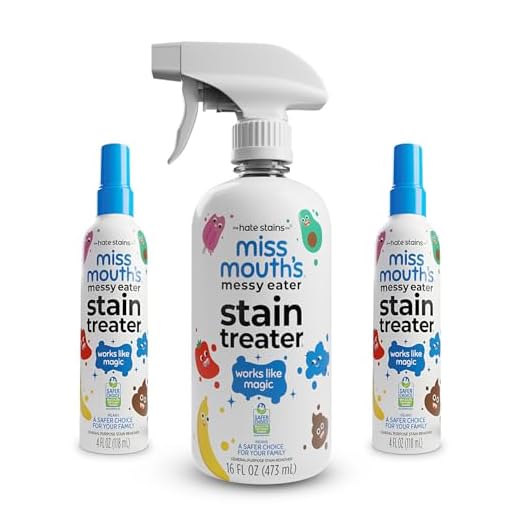



Immediately blot the affected area with a clean, dry cloth. Absorb as much of the liquid as possible without rubbing, as this can spread the stain further.
Mix a solution of one part dish soap and two parts hydrogen peroxide. Apply the mixture to the blemished area using a soft cloth or sponge. Gently dab, ensuring you don’t saturate the fibers excessively.
After treatment, rinse the area with cold water and blot with a dry cloth to remove any residue. If necessary, repeat the process until the stain is diminished. For persistent marks, consider employing a specialized carpet cleaner.
Always test any solution on a small, inconspicuous section first to ensure it won’t damage the material.
Removing Stains from Light-Colored Textile
Act quickly. Blot the spill with a clean, dry cloth or paper towel, absorbing as much liquid as possible without rubbing, which can spread the stain.
Materials Needed
- Cold water
- White vinegar
- Dish soap
- Clean cloths
- Spray bottle
Steps to Follow
- Mix one cup of cold water with one cup of white vinegar and one tablespoon of dish soap in a spray bottle.
- Spray the solution onto the affected area, ensuring it’s damp but not soaking.
- Allow it to sit for 5-10 minutes to break down the stain.
- Blot with a clean cloth, working from the outside in to avoid spreading.
- Rinse the area with cold water and blot again to remove any residue.
- If necessary, repeat the process until the discoloration diminishes.
For tougher stains, consider a commercial stain remover designed for delicate fibers, following the manufacturer’s instructions carefully.
Understanding the Stain Properties of Wine
Acidity plays a significant role in the behavior of this beverage when it comes to fabrics. The high acidity can break down fibers, making them more susceptible to discoloration. Additionally, the presence of tannins contributes to the deep pigmentation, which can easily bond with natural fibers like cotton or wool.
The color compounds, known as anthocyanins, are responsible for the rich hues found in this beverage. These pigments can penetrate fabric fibers quickly, especially when the liquid is warm. This rapid absorption can make immediate treatment crucial to prevent permanent staining.
Temperature is another factor. Warm liquids can spread more quickly, increasing the likelihood of a larger stain. Cold temperatures, on the other hand, can slow down this process, providing a slight advantage in managing spills.
Different fabric types react variably. Synthetic materials may resist staining better than natural fibers, but they can also trap pigments, making removal more challenging. Understanding these properties helps in choosing the right cleaning approach.
Using a blotting technique rather than scrubbing is essential. Scrubbing can push the pigments deeper into the fibers, complicating the cleaning process. Instead, gently dabbing the area can help lift the stain without causing further damage.
Enzymatic cleaners can be particularly effective on these stains, as they target the organic compounds found in the liquid. Selecting the appropriate cleaner based on the fabric type and stain characteristics is vital for optimal results.
Immediate Actions to Take After a Spill
Act swiftly to mitigate damage. First, gently blot the affected area with a clean, dry cloth or paper towel. Avoid rubbing, as this can spread the liquid deeper into fibers. Use a dabbing motion, applying light pressure.
Next, sprinkle a generous amount of salt or baking soda on the stain. These substances will absorb the liquid, helping to lift the color from the fibers. Allow it to sit for several minutes before carefully vacuuming the powder.
If the stain persists, mix equal parts of cold water and white vinegar in a container. Dampen a cloth with this solution and continue to blot the stain, working from the outside in. This method can help neutralize the pigments.
Rinsing the Area
After treating with vinegar, rinse the area with cold water to remove any residue. Blot again with a dry cloth to absorb excess moisture. This step is critical to prevent any remaining cleaning agents from causing further discoloration.
Final Touches
For stubborn stains, consider applying a small amount of dish soap mixed with water. Repeat the blotting process, then rinse thoroughly. Once complete, allow the area to air dry completely, avoiding direct sunlight to prevent fading.
Homemade Solutions for Red Wine Stains
For immediate action against those stubborn marks, combine one tablespoon of dish soap, one tablespoon of white vinegar, and two cups of warm water. Blot the area with a clean cloth soaked in this mixture, applying pressure to lift the discoloration. Rinse with cold water after treatment.
Baking Soda Paste
Create a paste using three parts baking soda to one part water. Apply it directly to the stained area and let it sit for 30 minutes. Once dried, gently brush off the residue and vacuum the area. This method absorbs any lingering pigments effectively.
Salt Absorption Method
If you catch the spill early, sprinkle table salt generously over the affected spot. Let it absorb for several minutes before vacuuming. This technique can prevent deeper penetration of the pigments into the fibers.
Commercial Products That Work on Wine Stains
For tackling stubborn blemishes from grape beverages, several specialized cleaning agents prove effective. Look for enzymatic cleaners, which break down organic compounds in stains. Brands such as Zout and OxiClean offer formulations specifically designed for tough marks. These products typically need a brief dwell time before blotting, ensuring optimal results.
Stain Removal Sprays
Stain removal sprays like Wine Away are formulated explicitly for combating grape drink stains. This product utilizes natural ingredients and is safe for various fabrics. Apply directly to the affected area and gently blot with a clean cloth. Repeat if necessary for persistent spots.
Powdered Cleaners
Another option includes powdered oxygen bleach, such as OxiClean MaxForce. Mix the powder with water to create a paste, apply it to the stain, and allow it to sit for a period. This method can lift marks effectively when followed by thorough rinsing.
Step-by-Step Guide to Cleaning the Stain
Begin by blotting the affected area with a clean, dry cloth or paper towel. Gently press down without rubbing to avoid spreading the liquid further. This initial action is crucial in minimizing the stain’s impact.
Preparation of Cleaning Solutions
Next, prepare your cleaning solution. Combine one part dish soap with two parts hydrogen peroxide in a bowl. Mix thoroughly until well combined. Ensure the mixture is ready for application.
Application and Rinsing
Apply the solution directly onto the stained area using a clean cloth. Work from the outside of the stain towards the center to prevent spreading. Allow it to sit for about 30 minutes to break down the pigments. Afterward, rinse the area with cold water to remove the cleaning mixture. Blot again with a dry cloth to absorb excess moisture.
| Materials Needed | Instructions |
|---|---|
| Clean cloth or paper towels | Blot the stain gently. |
| Dish soap | Mix with hydrogen peroxide. |
| Hydrogen peroxide | Apply the solution to the stain. |
| Cold water | Rinse the area thoroughly. |
If the stain persists, repeat the process or consider using a specialized product designed for tough stains. Always perform a patch test on a hidden area of the fabric to ensure colorfastness before full application.
Testing for Colorfastness on Your Carpet
Before tackling any stain removal, assess the colorfastness of your fabric. This ensures that cleaning methods won’t damage the material or lead to further discoloration.
Steps to Test Colorfastness
- Choose an inconspicuous area of the carpet.
- Moisten a clean white cloth with water or a mild cleaning solution.
- Gently blot the selected area with the damp cloth.
- Check for any color transfer onto the cloth.
- If no color appears on the cloth, the material is likely colorfast.
Alternative Testing Method
For extra caution, consider using a cotton swab:
- Dip a cotton swab in water or a mild detergent.
- Test a small, hidden section of the fabric.
- Observe if any dye comes off on the swab.
Following these steps will help you safely proceed with cleaning methods without risking damage to your flooring. Always prioritize fabric integrity before applying any stain removal techniques.
Preventing Future Stains on Your Light-Colored Carpet
To avoid mishaps with spills, consider using area rugs or runners in high-traffic zones. These protective layers can serve as barriers against potential damage.
Regularly apply a fabric protector designed for carpets. This treatment creates a repellant layer, making it easier to wipe away spills before they settle into fibers.
Establish Drink Zones
Designate specific areas for beverages, ideally on surfaces that are easy to clean. Using coasters will minimize the risk of accidental spills and keep surfaces safe.
Immediate Clean-Up Kit
Assemble a portable clean-up kit containing absorbent cloths, a spray bottle with water, and a mild detergent. Having these items on hand allows for swift action in case of unexpected incidents.
For more information on maintaining kitchen safety, check out how long does it take to cook sausage links.








